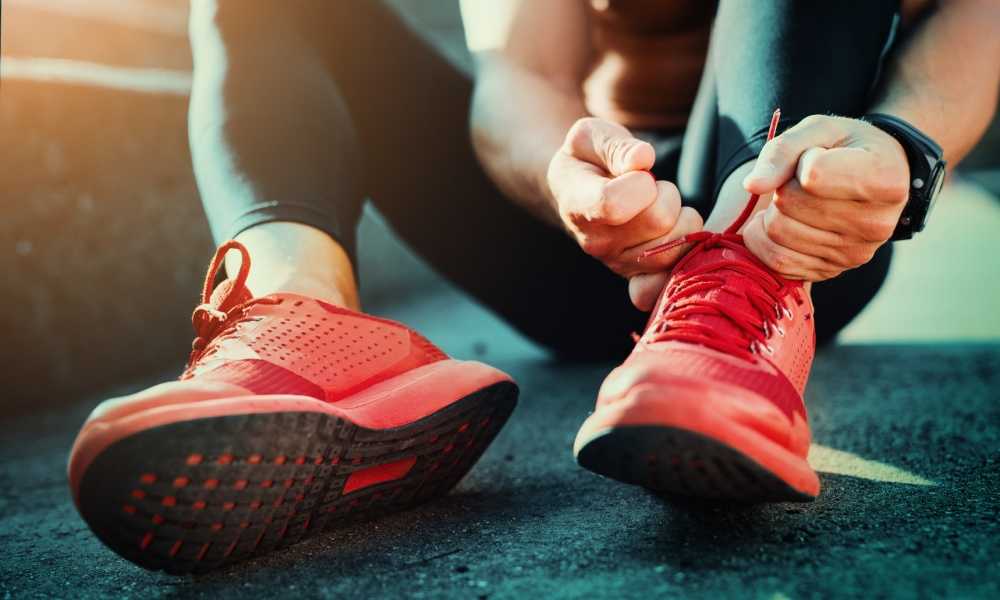Last Updated on November 8, 2022 by admin
Have you ever considered how many times in your lifetime you may have tied your laces? We think you’ll agree it is going to be a pretty big number. It is something we take for granted, and why very few people realize you can use different lacing methods to suit the size, type and shape of your feet.
This is especially useful when it comes to running shoes, as when running, your feet are placed under the most amount of potential stress and discomfort. For those of you with wide feet, this might be particularly true as it is often the case that running shoes are manufactured to mainly accommodate normal feet, and not wide ones.
How Do We Get Wide Feet?
Ask anyone who has wide feet where they got them from, and the most likely response will be one or both of their parents. This may be so, as wide feet can be genetic. However, it may also be from a more distant relative such as grandparents or even great-grandparents.
While there is not a lot you can do to change your genetics, there are a couple of other reasons for having wide feet that are self-generated, although one of them will usually be regarded as a happy one. This applies to expectant mothers, who when pregnant, experience a myriad of changes to their body which unfortunately can include a widening of their feet.

Issues Associated with Wide Feet
It must be stressed that having wide feet is not something that should will cause major issues. Where these issues do occur, it tends to be because someone with wide feet, continuously wears footwear that is patently too tight for them.
One such issue will be corns which will appear on toes due to the skin on them constantly rubbing against the inside of the shoes. These can be painful and often lead to broken skin and sometimes bleeding.
The other issue that can arise is that of bunions. This is a swelling that appears at the base of the big toe and is either formed of tissue or the bone itself. In the worst cases, bunions can grow to very large sizes to the point of deformity and require surgery to have them removed.
Wide Feet and Running Shoes
It is one of life’s strange quirks that we all have a shoe size, but within each group of people of a particular shoe size, there will varying foot widths. Unfortunately, it is not always the case that footwear manufacturers will produce shoes of varying widths for a specific size, and this is especially true when it comes to sports shoes, of which running shoes is one example.
This leads to the problem of people with wide feet having to wear running shoes which match their normal shoe size, let’s say size 9 or 10, but feeling a degree of discomfort when wearing them, as the width of their feet is higher than average.

This can mean running in shoes that may be comfortable most of the time, but when your feet are especially warm, or you’ve been running for some distance, pressure may occur which creates discomfort or even pain.
Lacing Running Shoes for Wide Feet
There are two ways you can lace your running shoes if you have wide feet, although the first one can be used by anyone if they feel their running shoes feel a bit tight. For the purposes of explaining, the ‘front’ eyelet is the one closest to your toes, the ‘back’ eyelet, is closest to you heel.
Method 1 – Parallel Lacing
The principle behind this method is that you are lacing the running shoe in such a way that they are distributed evenly, thus the pressure on any specific part of the foot is even too.
- Feed each end of the laces through the front eyelet.
- Take one end and lace through a pair of parallel eyelets. In other words, two side by side.
- Do the same with the other end.
The pattern you should have is each pair of eyelets with a straight piece of lace linking them horizontally
Method 2 – Crisscross Lacing
This is a lacing method which is like how many people lace their shoes normally with one very important difference when used for wide feet
- Take the two ends of the lace and push each one through the front eyelet.
- Crisscross the lace through the next two alternate eyelets.
- Continue to crisscross, but only use alternate eyelets.
You should finish with two equal lengths of lace ready to be tied and alternate eyelets with no lace through them.

